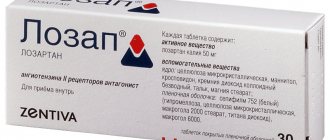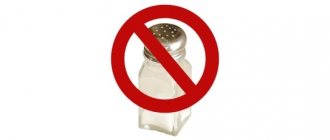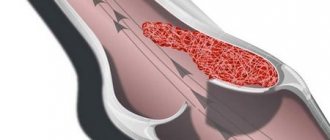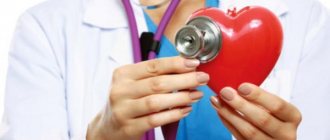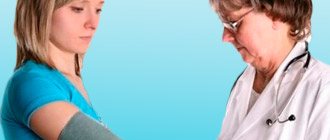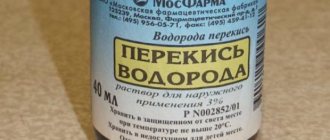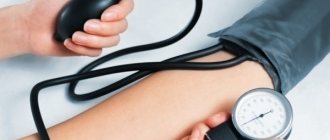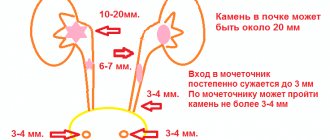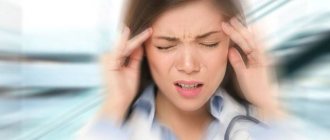You are reading the general section section TREATMENT OF ARTERIAL HYPERTENSION
Subsections: Medicines and medicines | Treatment without drugs | ethnoscience
The diagnosis of “Arterial hypertension” is made in cases when, during medical examinations, an increase in pressure to a level of 140/90 mmHg or higher is recorded.
To make a diagnosis, the following conditions must be met! There must be at least two examinations of the patient by the doctor. At each appointment, blood pressure is measured at least twice.
Of all cardiovascular diseases, hypertension is considered the most common. An increase in blood pressure is often accompanied by deterioration in memory and performance, increased irritability, headaches and dizziness. All these troubles are of a temporary nature.
Most people mistake such symptoms for ordinary fatigue and do not consult a general practitioner. Meanwhile, the disease progresses. Over time, mood swings and headaches become more frequent, and performance and memory deteriorate significantly.
Stages of arterial hypertension
Arterial hypertension develops gradually and has several stages:
- Stage I, or mild, is diagnosed if the pressure rises to a level from 140/90 to 160/99 mmHg. At this stage, the pressure usually returns to normal during rest. Associated symptoms are headaches, tinnitus, insomnia, decreased performance. Sometimes there may be dizziness and nosebleeds.
- Stage II, or middle, is characterized by a steady increase in blood pressure to a level from 160/100 to 180/109 mmHg. Dizziness and headaches make themselves felt more often. Pain appears in the heart area.
- Stage III, or severe, is manifested by an increase in blood pressure above 180/110 mmHg even at rest, which is accompanied by hypertensive crises.
The degree of hypertension is determined by two terms:
- Essential hypertension, or primary, is a chronic form of the disease. It occurs in 80% of cases in patients with high blood pressure. Often its level is the only sign of illness.
- Secondary hypertension, or symptomatic, is a form of the disease in which the cause of its development is pathology of blood vessels or internal organs.
Hypertension most often develops in people living in highly developed countries, where the level of psycho-emotional stress is too high.
Residents of big cities are more likely to experience stress and depression. Experts are confident that the central nervous system plays a major role in the development of this disease.
Modern drugs
The standard treatment for hypertension is a combination of several approaches of classical medicine. There is a certain protocol that prescribes the doctor’s actions. It begins with an examination of the patient, a survey, a referral for examination, analysis of the results and preparation of a course of therapy. Focusing on the standard and generally accepted protocols, the doctor will be able to create an effective treatment for hypertension. First, the patient needs to go to the hospital at his place of residence. The further course of therapy will consist of the following stages:
- inpatient therapy;
- ambulatory treatment;
- rest and recovery, preferably in a sanatorium or resort.
In an inpatient setting, the patient is examined, the doctor analyzes the patient’s condition daily, prescribes medications and various procedures. When the person gets better, he is discharged to continue the course of therapy on an outpatient basis.
How to properly treat hypertension after discharge:
- The patient must go to the local doctor at his place of registration.
- He will be offered to undergo a course of physical therapy, he will definitely need to change his lifestyle and take medications.
- If elevated blood pressure is detected during therapy, the specialist adjusts the treatment regimen. If there are no complaints, the patient will be advised to rest more and go to a sanatorium or resort. The doctor will also list clinical recommendations that you will have to follow throughout your life.
Drug treatment is the mainstay of therapy for most diseases. It is used to get rid of high blood pressure in the later stages of hypertension. In the early stages, lifestyle correction mainly helps.
In the treatment of hypertension, consistency and the correct selection of medications are important.
When choosing medications, the doctor focuses on the following factors:
- financial condition of the patient;
- the presence of chronic pathologies;
- the stage in which hypertension is located;
- risk factors;
- state of the cardiovascular system.
ACE inhibitors
According to many experts, ACE inhibitors are excellent in helping to cope with hypertension. Due to their effect on the body, high blood pressure gradually drops, and against this background, the risk of developing complications decreases. In people with chronic heart failure, long-term use of ACE inhibitors improves the general condition and prognosis for further development of the pathology.
ACE inhibitors help reduce blood pressure by blocking the production of angiotensin I, from which angiotensin II must be formed. The latter causes vasospasm, which leads to the development of hypertension. Without angiotensin II, the patient's blood pressure drops and the degree of myocardial hypertrophy decreases.
Treatment of hypertension with ACE inhibitors may no longer be effective over time. With long-term use of drugs from this group, the second pathway of angiotensin II synthesis gradually becomes more relevant, namely through chymase in the organs and tissues of the body. In addition, taking ACE inhibitors can cause a sore throat and cough. The following drugs are used to treat high blood pressure from this group:
- "Enal";
- "Kapoten" (used for crises);
- "Amprilan";
- "Accupro";
- "Zokardis";
- "Diroton";
- "Monopril."
Treatment of hypertension should begin with low doses of inhibitors. They are gradually increased to achieve stable remission. Getting rid of blood pressure will not be easy; the whole process will take at least 3-4 weeks. Then you will need to take medications for preventive purposes for an even longer period (at least a year). The use of ACE inhibitors is prohibited in the following cases:
- pregnancy;
- angioedema due to the use of similar drugs;
- narrowing of the lumen of the arteries supplying the kidneys;
- excess potassium in the body.
Sartans
Sartans in medicine are also called receptor blockers that perceive angiotensin II, abbreviated as ARBs. The effects of this group of drugs are similar to ACE inhibitors. However, sartana makes angiotensin receptors completely insensitive to it, so the second pathway for the synthesis of this enzyme will not appear over time. For this reason, treating blood pressure with ARBs produces more lasting results. There are virtually no side effects after taking the medicine, but in rare cases a cough appears. The following drugs from this group can help relieve blood pressure:
- "Lorista";
- "Aprovel";
- "Mikardis";
- "Atakand";
- "Walz"
- "Edarbi";
- "Teveten";
- "Carsoad."
Calcium antagonists
Calcium antagonists are called calcium channel blockers. In case of arterial hypertension, treatment with them allows you to get rid of high blood pressure by dilating blood vessels and reducing their overall resistance. The result is achieved by blocking the flow of calcium. This reduces the sensitivity of blood vessels to vasoconstrictor factors.
Long-term use of calcium antagonists helps not only with how to treat arterial hypertension, but also allows you to achieve the following results:
- Reducing the likelihood of blood clots.
- Reducing the chance of developing complications of high blood pressure.
- Slowing down the formation of atherosclerotic plaques on the walls of blood vessels.
- Reduction of left ventricular hypertrophy.
Three groups of calcium antagonists are used to treat arterial hypertension. Each of them has its own characteristics.
- Dihydropyridines. They do not particularly affect myocardial contraction and cardiac conduction. Dihydropyridines act selectively on the vessel wall. With high blood pressure, treatment with them allows you to quickly stabilize the patient’s condition. Drugs from the dihydropyridine group come in short-acting and long-acting forms. Among them are “Cordaflex”, “Nifekard” and “Lekarmen”. With prolonged use, dihydropyridines can cause swelling.
- Phenylalkylamines. The essence of their action is to reduce the conductivity of the heart, thereby reducing the intensity of heart contractions. Phenylalkylamines have no effect on distant (peripheral) vessels. For hypertension, treatment consists of taking Isoptin or Finoptin tablets.
- Benzodiazepines. They are similar in their effects to phenylalkylamines. However, benzodiazepines can slightly constrict blood vessels, therefore, with high blood pressure, treatment with them should be carried out under the strict supervision of a doctor. Diltiazem can be distinguished from this group.
Diuretics
The effect of diuretics (diuretic drugs) on the body has been studied well enough to use this group of drugs to treat hypertension. They rid the patient’s body of excess moisture, thereby reducing the severity of hypertension. When used over a long period of time, diuretics cause a deficiency of potassium in the body, which helps muscles contract. If the supply of minerals is not replenished on time, the patient may experience convulsions. For this purpose, treatment for hypertension includes taking drugs that contain calcium (Asparkam) or using potassium-sparing diuretics (Triamterene).
How to beat hypertension? The following representatives of the group of diuretics will help in this matter:
- "Hypothiazide";
- "Trigrim";
- "Furasemide";
- "Diakarb."
B-blockers
They act on beta-adrenergic receptors, thereby reducing the influence of the sympathoadrenal system (SAS) on the heart. Against this background, the intensity of heart contractions decreases and the synthesis of renin in the kidneys stops. Modern treatment of hypertension allows the use of beta-blockers in the following cases:
- if arterial hypertension is accompanied by tachycardia;
- after a heart attack;
- in the presence of angina (pain behind the chest);
- if heart failure develops.
Among this group of drugs, the most popular ones can be identified:
- "Concor";
- "Lokren";
- "Nebilet";
- "Coriol";
- "Egilok".
Beta blockers cannot help get rid of hypertension forever, but they can stabilize blood pressure while taking it. Their use is prohibited in case of asthma and 2-3 degree block of the atrioventricular center.
Imidazoline receptor agonists
Imidazoline receptor agonists act on the central nervous system. Especially on I2-imidazoline receptors, which are localized in the medulla oblongata. The influence of drugs from this group reduces the activity of the sympathetic division of the autonomic (autonomic) nervous system. As a result of this process, the pressure and contraction of the heart muscle are stabilized.
Imidazoline receptor agonists not only help treat hypertension, but also improve metabolic processes, especially carbohydrate and fat metabolism. In addition, it has a positive effect on the brain, kidneys and cardiovascular system.
Of the representatives of this group, the following drugs are most often used:
- "Moxarel";
- "Moxonitex";
- "Albarel";
- "Moxonidine" (for crises).
Arterial hypertension is just one of the diseases for which imidazoline receptor agonists are prescribed. They are often used in the complex treatment of obesity and diabetes. The use of medications from this group is prohibited in the following cases:
- renal and heart failure;
- bradycardia (with a pulse less than 50);
- weakness of the sinus node;
- coronary syndrome.
Sometimes even a doctor finds it difficult to understand how to treat high blood pressure if the severity of the disease does not decrease. In such situations, the use of additional medications is allowed:
- renin inhibitors (Aliskiren);
- alpha-blockers (Alfuzosin, Doxazosin, Prazosin).
If you correctly combine basic antihypertensive medications with additional ones, you can improve the metabolism in the body. This will help get rid of high blood pressure forever. However, renin inhibitors and alpha-adrenergic receptors should be used only in complex therapy, and not as the only medicine. Comprehensive treatment of any pathology, including the fight against hypertension, consists of a combination of medications. Basically, doctors prescribe the following combinations of drugs:
- ACE inhibitor together with sartana and a diuretic drug.
- An ACE inhibitor together with sartana and a calcium channel blocker.
- ACE inhibitor, diuretic and calcium channel blocker.
Treatment for low blood pressure (hypotension) involves taking the following medications:
- Adaptogens. They are used due to their ability to narrow and increase vascular tone. During therapy, the patient's blood pressure, pulse and performance increase. Low blood pressure is treated with adaptogens such as Pantocrine or Saparal. Instead of tablets, in mild cases you can drink red wine, for example, “Cahors” 1 tbsp. l. in a day.
- Alpha adrenergic agonists. They are used when there is a strong drop in pressure; they act on alpha-adrenergic receptors, as a result of which the pressure increases and the blood vessels narrow. The most commonly used are “Gutron”, “Midamin” and “Mezaton”.
Symptoms of high blood pressure
For a long time, a person may not even suspect that his blood pressure periodically rises.
Most patients seek help from specialists with complaints of severe fatigue, memory loss, frequent headaches and dizziness, and insomnia. And only at an appointment with a doctor it turns out that all these symptoms are evidence of the development of hypertension.
Reasons for visiting a doctor:
- throbbing headaches, which are accompanied by darkening of the eyes, redness of the face and neck;
- heart pain and periodic heart rhythm disturbances;
- dizziness;
- blurred vision with the effect of flickering spots or spots before the eyes;
- tremor of the whole body, as with chills;
- increased sweating.
As a rule, one or more symptoms from the list above indicate increased blood pressure.
The second reason for high blood pressure: blood acidity
The fact is that the cells of all organs need not only nutrients, but also, most importantly, oxygen. Oxygen is carried by blood cells - red blood cells. The red blood cell receives oxygen in the lungs, and must release it in the smallest vessel in which all useful substances are transferred from the blood to tissues and cells - in the capillary.
The trick is that the diameter of the capillary is smaller than the diameter of the red blood cell. That is, a red blood cell can enter the capillary only by curling up into a tube. This is necessary so that the release of blood from the erythrocyte occurs quickly - over the entire surface of the erythrocyte.
With a high level of blood acidity, red blood cells swell and cannot curl into a tube. And, therefore, they cannot get into the capillary. Cells and tissues remain without oxygen and send a signal to the brain that there is not enough oxygen.
The brain thinks that the problem is caused by a narrowing of the vessel, and increases the pressure so that the same amount of blood can pass through the vessel of a smaller diameter as before through the vessel of a larger diameter. The result is the same - increased blood pressure.
What to do to prevent blood pressure from rising? Firstly, regularly relax the muscles of the back and sides of the neck - for this you can do simple exercises, which we have already talked about. Secondly, restore blood alkalinity. Let's talk about this in more detail.
Risk factors for developing pathology
The development of hypertension can be caused by various factors. Most often it is heredity. Constant emotional stress is also one of the most common causes of the development of the disease.
The following factors contribute to a rise in blood pressure:
- bad heredity;
- constant stress;
- obesity;
- elevated cholesterol levels;
- alcohol and smoking;
- diseases of the nervous system, thyroid gland and hypothalamus;
- sedentary lifestyle;
- kidney diseases;
- oxygen starvation;
- excessive salt intake;
- menopause;
- constant stay in the noise zone.
Degrees of hypertension
Each stage of hypertension has a certain level of blood pressure.
1st degree. There are constant pressure surges. At the same time, it normalizes on its own and does not require drug intervention. A characteristic feature of this degree is pressure in the range of 140-160/90-100.
2nd degree. Borderline stage of disease development. Jumps occur less frequently. Most of the time a person suffers from high blood pressure. Bounding frames - 160-180/100-110
3rd degree. Blood pressure may exceed 180/110. Blood pressure is consistently high. In this case, a decrease in pressure may indicate a weak heart.
Treatment of hypertension without medications is especially effective for people with degrees 1 and 2 of the disease. At other stages of the disease, it will not be possible to do without medications. There is also such a thing as malignant hypertension. This condition is typical for relatively young people aged 30 to 40 years. The peculiarity of malignant hypertension is extremely high blood pressure, which can reach 250/140. The kidney vessels are not able to cope with such indicators, which leads to their changes.
Traditional treatment of hypertension
To stabilize blood pressure, patients are advised to change their lifestyle and diet. It is advised to direct all efforts to losing weight and giving up bad habits.
The diet menu involves reducing the amount of salt in the diet.
Tips for changing your work schedule:
- working one shift;
- exclusion of night shifts;
- improvement of working conditions;
- setting aside time for rest and proper sleep;
- increase in physical activity.
When a diagnosis of arterial hypertension is made, all patients are prescribed antihypertensive drugs.
The doctor must warn you that when your blood pressure level drops, your overall health may sometimes worsen. Therefore, the doctor selects the target blood pressure level and the rate of decrease taking into account various factors. For example, the patient’s age, the presence or absence of vascular pathologies, the duration of the disease.
Clinical guidelines for the treatment of arterial hypertension
| Non-drug treatment | Drug therapy |
| If non-drug treatment does not give the desired results and the pressure is still above 140/90 mmHg, it is necessary to add therapy with one of the following drugs:
If the effect of the drug is ineffective, then an additional drug from another group is prescribed. To enhance the antihypertensive effect, the doctor may prescribe three drugs from different groups at once. |
Living with hypertension
If the disease progresses and it cannot be completely cured, accept the diagnosis and learn to live with it.
The lifestyle of a hypertensive person differs from that of a healthy person. What is he like? Ideally, a person suffering from hypertension must comply with a number of requirements:
- Switch to a different diet - a salt-free diet, a different method of cooking (food is boiled, stewed, steamed), give up tasty but unhealthy food, treat yourself not to sweets and smoked meats, but to fruits, vegetables, and nuts.
- Quit bad habits.
- Provide regular moderate physical activity.
- Engage in auto-training or use other available methods for relaxation and increase stress resistance (communication with pets, calm dancing, reading, cinema, music, hobbies, travel). Fundamentally reconsider your relationship with the outside world and with yourself.
- Control your weight.
- Monitor your blood pressure.
- Follow the doctor's recommendations, take prescribed medications in the prescribed dose according to a specific regimen.
- Many hypertensive patients are weather dependent, so monitor the weather conditions and take the necessary precautions - prepare in advance for possible hypertensive crises.
- Patients should not be overcooled; also avoid prolonged exposure to the sun.
- It is not recommended to change the climate suddenly.
- It is better to give up conquering the mountains and the depths of the ocean; a holiday at the Dead Sea would be an excellent alternative.
- Get enough sleep.
- Take care of a reasonable combination of work and rest.
- Monitor edema, and fight it when it first appears (use diuretics).
In addition, hypertensive patients should always have a special first aid kit on hand. Contents of medications in it: for relief of hypertensive crisis and daily use. Here is an approximate list of necessary medications that you carry with you:
- "Captopril", "Lisinopril", "Enalapril" - ACE inhibitors; during a crisis, place the tablet under the tongue and dissolve;
- “Metoprolol”, “Anaprilin”, “Atenolol” - beta-blockers; the crisis is relieved by intravenous injection;
- “Nifedipine” (under the tongue), “Verapamil” (intravenously) – vasodilators;
- "Furosemide" (intramuscular or intravenous for quick effect);
- “Valerian”, “Motherwort”, “Peony” - sedatives;
- “Baralgin”, “Pentalgin”, “Citramon” - analgesics;
- "Semax" - regulatory peptides (stabilize the functioning of the brain and the whole body, relieve the crisis).
You can live with hypertension for many years; a person gradually gets used to the prohibitions and restrictions, and following such rules is useful even for healthy people. Only early diagnosis and optimal lifestyle correction will stop the disease. To completely eliminate symptomatic hypertension, you may have to undergo surgery.
Effective drugs and pills for hypertension
In young patients, blood pressure is easily normalized if there are no vascular complications. In older people it reaches dangerous levels. When using medications, withdrawal syndrome is often observed, accompanied by hypertensive crises. Therefore, continuous therapy with drugs with antihypertensive effects is needed for a long time.
Table: effective drugs for lowering blood pressure
| Name of the drug | Effect of the drug |
| Dogepit | Under the influence of the drug, there is an increase in brain adrenergic receptors and a decrease in sympathetic activity in the peripheral zone. |
| Enalapril | Blood pressure decreases due to the dilation of blood vessels; heart functions are optimized; the release of sodium ions increases. |
| Hemiton | Has an effect on alpha-adrenergic receptors in the brain; the drug has a sedative effect. |
| Octadine | A potent agent reduces the tone of small vessels and veins. At the same time, the level of diastolic pressure decreases, the amount of blood increases in the venous reservoir, and cardiac output decreases. |
| Anaprilin | Under the influence of the drug, cardiac output decreases. Sinus rhythm is disturbed. |
| Hypothiazide | The drug has a diuretic effect. Under its influence, cardiac output decreases. |
| Furosemide | The action of the drug is based on inhibition of the reabsorption of water and sodium. |
| Kapoten | The drug prevents the narrowing of arterial and venous vessels. Effectively lowers blood pressure. |
When the pressure rises to a critical level (hypertensive crisis), the following drugs are used: Aminazine, Lasix, Rausedil, Dibazol, Capoten, Pentamin, Magnesium Sulfate, Dopegit.
Emergency help for high blood pressure at home
Modern medicine treats high blood pressure with antihypertensive pills that weaken myocardial contraction. Beta blockers, which are part of antihypertensive drugs, simply artificially weaken the heart muscle, thereby reducing systolic pressure. Naturally, after several years of taking these drugs, the heart muscle becomes weak and myocardial dystrophy occurs. And the reason for this is taking antihypertensive drugs.
It must be understood that blood pressure is derived from the difference between blood volume and the volume of the bloodstream. Blood, like any liquid, is incompressible and does not change its volume. But the bloodstream - the vessels through which blood flows - can shrink or expand. Naturally, vasoconstriction leads to an increase in blood pressure, and vasodilation leads to a decrease.
Therefore, in an emergency, in the event of an attack of hypertension, you can quickly reduce the pressure by expanding the bloodstream. To do this, you can steam the skin until it turns red, apply mustard plasters to your calves, or increase the amount of carbon dioxide in the inhaled air (breathing into a bag and similar methods). This will help lower your blood pressure for a while. And to normalize blood pressure for a long time, it is necessary to restore full blood flow to the brain through exercise and alkalize the body through nutrition.
Treatment of hypertension with folk remedies
Non-traditional methods of treatment are in the arsenal of every hypertensive patient. Traditional medicine helps reduce blood pressure gradually and keep it at normal levels for a long time. Basic treatment with these drugs cannot be replaced. However, they help maintain good health.
The following healing properties are widely used in folk medicine:
- Honey and its products. In recipes, to enhance the healing effect, it is combined with herbs, vegetable juices and berries. Infusions of rose hips, viburnum, rowan, raisins, prunes, dried apricots, and hawthorn are drunk with honey to reduce blood pressure.
- Viburnum. To improve heart function, the berries are eaten raw, together with the seeds. To lower blood pressure, you can prepare the so-called “ruby drink”. The berries, along with the seeds, are brewed in a thermos and drunk with sugar or honey.
- Rowan red and black. 1 kg of red rowan is ground with 700 g of sugar. They eat a delicious healing mixture twice a day, about 100 g each. They drink syrup from 1 kg of black rowan and 600 g of sugar three times a day, 1 tablespoon.
Recipes for lowering blood pressure:
- Mix freshly squeezed red beet juice in a 1:1 ratio with honey. Take up to 5 times a day, a couple of tablespoons.
- Mix cranberry juice with honey in a 1:1 ratio and take a tablespoon three times a day 20 minutes before meals.
- Mix crushed viburnum fruits weighing 100 g with the same amount of buckwheat honey and bring to a boil. The cooled mixture is taken three times a day, one tablespoon at a time.
- Prepare a three-day tincture from 200 g of carrot juice, 200 g of beet juice, 200 g of honey, 100 g of cranberries, 100 ml of alcohol. Drink it three times a day, a tablespoon.
- On an empty stomach, drink a drink consisting of 1 glass of mineral water, a tablespoon of honey and the juice of half a lemon. The course of treatment is from 7 to 10 days.
- Remove seeds from 100 g of hawthorn berries and pour 2 glasses of cold water in the evening. In the morning, boil the mixture and strain. You need to drink this drink for a month.
- A couple of glasses a day of potato peel decoction effectively reduces blood pressure.
Many have noticed that during fasting, blood pressure normalizes when the amount of fatty, meat, and sweet foods in the diet is limited.
Is it possible to cure hypertension without giving up the joys of life?
Why do the measures that doctors usually recommend so rarely help? Because doctors' advice is often too difficult to implement in real life. Doctors recommend that patients voluntarily give up most of the joys of their lives. Naturally, patients are in no hurry to do this.
| Traditional recommendation for patients with hypertension | Why is it difficult to do? |
| Reduce stress levels at work and at home | To do this, you need to retrain or accept a decrease in income |
| Avoid fatty and salty foods and limit caloric intake | You'll have to go hungry all the time |
| Exercise outdoors | If after work there is also physical education, then when will we live? |
It is also good if a hypertensive patient swallows the pills prescribed to him in a disciplined manner every day. At best, they will delay the onset of target organ damage for several years. But, as a rule, you still don’t have to wait too long for a heart attack or stroke. Please note that this is actually beneficial for the state, because the number of pensioners is reduced, as well as the period during which they have to pay their pensions. What to do? Is there really no effective way to get your blood pressure under control and prolong your life? It turns out there is. Moreover, this wonderful method does not bring suffering to patients, quite the contrary. So, we have established and tested on dozens of patients that the best method of treating hypertension is limiting carbohydrates in the diet. A low-carbohydrate diet helps almost 100% of patients with hypertension, in whom this disease is combined with obesity or type 2 diabetes.
Cure from hypertension in 3 weeks - it's real! Read here:
- The best way to cure hypertension (quickly, easily, healthy, without “chemical” drugs and dietary supplements)
- Do you have hypertension + insomnia + irritability? This is a deficiency of magnesium in the body!
- Hypertension, its causes and how you can eliminate them
It turns out that you can eat your fill of meat, fish, fatty poultry, eggs, butter, etc. - and have normal blood pressure of about 120-130/80, as well as excellent blood cholesterol levels. Many patients don't believe this is possible at first because it seems "too good." However, it is true. In a few weeks, you will see for yourself that you can eat tasty and satisfying meals, and at the same time your blood pressure will normalize. Take blood tests for cholesterol and you will see that your levels are also improving. This means that the “new life” can be safely continued. Since on a low-carb diet you will feel full and satisfied all the time, there will be no reason to “break down” and return to your old diet.
Low-carbohydrate diets (Dukan, “Kremlin” and Atkins) are triumphantly marching across the country, despite the desperate resistance of “official” medicine. They bring the most benefit to people suffering from:
- obese
- type 2 diabetes
- epilepsy.
- ...and at the same time they quickly normalize blood pressure.
Why are doctors so resistant to promoting these diets? Because they promise millions of dollars in losses for drug manufacturers, and many doctors will soon be left without work. But for patients, this is an excellent opportunity to prolong their lives and be free from serious illnesses. Attention! This method is not suitable if you have “secondary” hypertension caused by some other “primary” disease. For example, progressive renal failure or adrenal tumor. In such cases, hypertension does not respond to conventional treatment. It will go away only when the doctor identifies and treats the primary disease. This applies to no more than 5-10% of patients from their total number. If you already have kidney failure, liver problems or serious diseases of the gastrointestinal tract, use only in consultation with your doctor and under his close supervision. Limiting carbohydrates in the diet is not recommended for pregnant women.
Prevention of pathology
Following simple rules will help maintain normal blood pressure:
- Reducing the amount of salt in the diet. This food additive increases blood pressure in people with diabetes; it retains water in the body, which causes vasoconstriction.
- Restriction in the diet of animal fats and foods high in cholesterol. This is fatty meat, lard, caviar, mayonnaise, eggs, baked goods, margarine, ice cream, and confectionery. Butter can be replaced with vegetable oil, and instead of fatty meat and lard, eat fish.
- Refusal of foods that can excite the nervous system. These include caffeinated drinks: tea and coffee, Coca-Cola and Pepsi-Cola
- Increase in diet foods high in magnesium and potassium. These substances strengthen the heart muscle and reduce vascular spasms. Potassium is found in citrus fruits, potatoes, rye bread, legumes, dried fruits, radishes, cabbage, bananas, black currants, garlic, asparagus, parsley, onions, carrots, and cucumbers. There is a lot of magnesium in buckwheat, oatmeal, millet, beets, chocolate, and walnuts. It must be remembered that calcium, which is found in large quantities in milk, reduces the absorption of potassium and magnesium.
- Increasing your diet with foods rich in vitamin C. This vitamin is found in large quantities in raw vegetables, fruits and berries. During heat treatment it quickly collapses. Record holders for vitamin C content are black currants, citrus fruits, rose hips, and sea buckthorn.
It is important to understand that treating hypertension in the early stages requires little effort. Severe stages are difficult to treat and cause stroke or heart attack.
What does acid-base balance depend on?
Violation of the acid-base balance of our internal environment, a gradual increase in the acidity of the body, is one of the important causes of aging.
To build the cells that make up our body, we need a certain amount of building material. We get it through nutrition. For this purpose, there is an entire digestive system, the main task of which is to ensure that the cells receive all the substances they need for life and normal functioning.
And since these substances are carried to the cells using the blood, then, naturally, the circulatory system takes an active part in this process.
All substances contained in the food we consume are eventually broken down into acidic or alkaline residues. Depending on this, all products are conventionally divided into alkaline or acidic.
Acid foods include carbohydrate foods (porridge, baked goods, flour, sweets, starch) and protein foods (meat, fish, milk). And alkaline - all greens and vegetables (except potatoes). Other foods, such as fruits, are both acidic and alkaline.
The diet we are all accustomed to, to which we have been accustomed since childhood, consists of approximately 70% acidic foods. Therefore, over time, acids accumulate in the body, changing the pH of our internal environment to the acidic side. Accordingly, in order to restore the pH of the blood and other environments of our body, it is necessary to change the ratio of acidic and alkaline foods in the diet in the opposite direction so that it is 70% alkaline. Then the acidity level will decrease and the acid-base balance will begin to restore.
Is hypertension treatable?
High blood pressure can be treated; the main thing is to strictly follow the doctor’s recommendations and not deviate from his prescriptions and recommendations. Hypertension is dangerous because many patients ignore it in the first stages of development, not realizing that the problem can cause serious complications and negatively affects the internal organs of a person: the heart, kidneys, brain vessels and others.
Is it possible to cure hypertension completely?
Patients who have experienced hypertension are interested in whether hypertension can be completely cured. To defeat this dangerous disease, you need to consider:
- The degree of development of the disease. At an early stage, hypertension can be successfully treated, but at a later stage it is more difficult to do.
- Individual characteristics of the body. In the presence of factors that cannot be eliminated, for example, heredity, getting rid of hypertension is unlikely.
- Willingness to follow all doctor's recommendations. If the patient forgets to take medications, does not take pills, does not watch his diet, etc., then treatment will progress slowly.
- Cause of hypertension. Blood pressure is often a consequence of another disease. If it is treated, then hypertension as a symptom will also go away.
What is hypertension
According to statistics, hypertension is considered the most common disease of the cardiovascular system, which develops slowly and often asymptomatically. Its cause is the thinning of the arteries and their branches (arterioles), while the blood volume remains the same. The heart, contracting, moves blood through the vessels, which presses on the walls of the arteries. This force is blood pressure. Blood pressure indicators include SBP (systolic blood pressure) and DBP (diastolic blood pressure).
High blood pressure, hypertension or hypertension is regular blood pressure on the walls of blood vessels with the following values:
- systolic above 140 mm Hg. Art.;
- diastolic from 90 mm Hg. Art.
Lifestyle change
To cure hypertension forever, you must adhere to the rules of a healthy lifestyle.
Normalization of body weight
In a person with excess body weight, the risk of developing cardiovascular pathologies and increased blood pressure increases due to:
- violations of the diet, consumption of foods containing “bad” cholesterol, which provokes atherosclerotic processes and pronounced changes in blood vessels;
- the need to supply blood not only to vital organs, but also to the “fat depot,” which increases the load on the heart and leads to premature wear of the organ. To allow blood to flow into vessels susceptible to atherosclerosis, blood pressure increases compensatoryly, and persistent hypertension develops;
- insufficient physical activity of overweight persons;
- production by adipose tissue of about 30 different biologically active substances that adversely affect the heart and blood vessels, provoking atherosclerotic changes.
Fighting hypertension without medications is inextricably linked with normalizing weight. It is necessary to balance the diet and increase physical activity. The help of a nutritionist is not excluded.
Getting rid of alcohol and cigarettes
Drinking alcoholic beverages is not an absolute contraindication for hypertension. Men are allowed to drink 80 ml of 40% drinks, 300 ml of 12% wine or 720 ml of beer with a strength of 5% daily. For women, the dosage should be halved.
You will have to give up cigarettes completely.
Normalization of work and rest schedules
Sleeping at least 8 hours, as well as proper rest, help reduce blood pressure. You need to relax not with the remote control in your hands near the TV or in front of a computer monitor. It is better to take a walk, spend free time in nature, read an interesting book, listen to music or just play with the children.
You should not work outside of working hours, much less stay on night shifts.
Stressful situations
According to medical research, constant stress leads to the development of hypertension in 95% of cases. Therefore, to reduce blood pressure, normalization of the psycho-emotional state is necessary.
It is recommended to change your attitude towards negative situations, apply meditative practices, and use self-regulation techniques. It is possible to contact a psychologist.
Prevention
To avoid complications of the disease and stop its development when the first symptoms of hypertension appear, it is necessary to follow certain rules. Prevention will help you cope with high blood pressure without the use of drugs. Important points:
- diet;
- weight loss;
- increased physical activity;
- use of magnesium preparations;
- normalization of sleep;
- compliance with work and rest schedules;
- refusal of alcohol, tobacco;
- salt restriction;
- stress prevention;
- treatment of diseases of the heart and blood vessels, kidneys.

